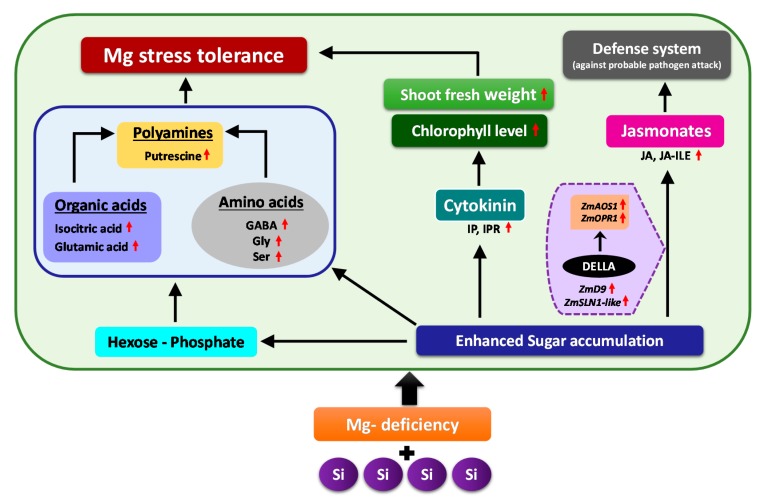Figure 9.
Schematic model illustrating the response of Mg-deficient maize plants to Si supply. Application of Si to the Mg-deficient maize plants enabled the plants to cope better with Mg deficiency by regulating primary metabolites and inducing phytohormonal changes. Si induced multiple responses under Mg deficiency, whereof the first response was enhanced accumulation of sugars in the shoots as an osmoticum that was accompanied by a simultaneous increase in hexose-P levels, organic acids, stress amino acids as well as polyamines (Putrescine), which sufficiently provided the carbon flow to glycolytic pathway. The second response was related to the phytohormonal regulation, due to which specific changes were observed in the level of active cytokinins IP and IPR as well as JA and its derivative JA-ILE. The increased concentration of cytokinin maintained the plant growth under Mg-deficient condition as indicated by higher shoot fresh weights and augmented chlorophyll level, whereas the increased level of jasmonates switched on the plant defense system (against probable pathogen attack) in response to enhanced sugar accumulation which was correlated with higher expression of DELLAs that might have further induced the JA related genes. Altogether, these responses contributed to Mg stress tolerance in the maize plants (Red arrows = increase/upregulation).

